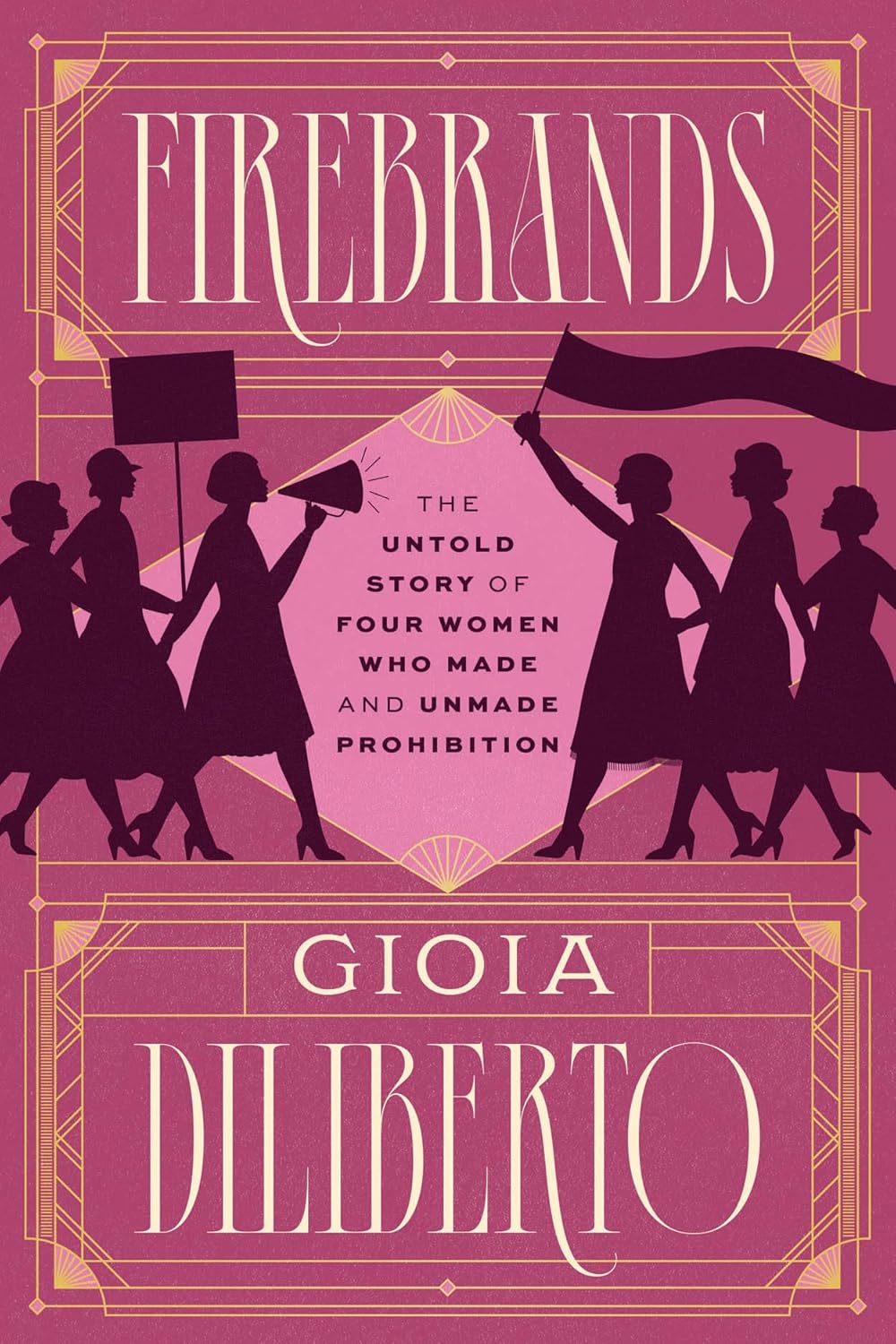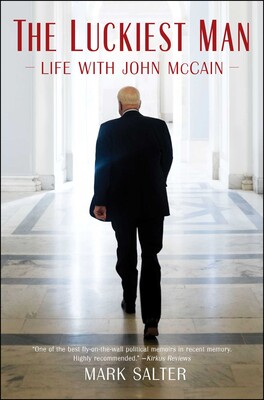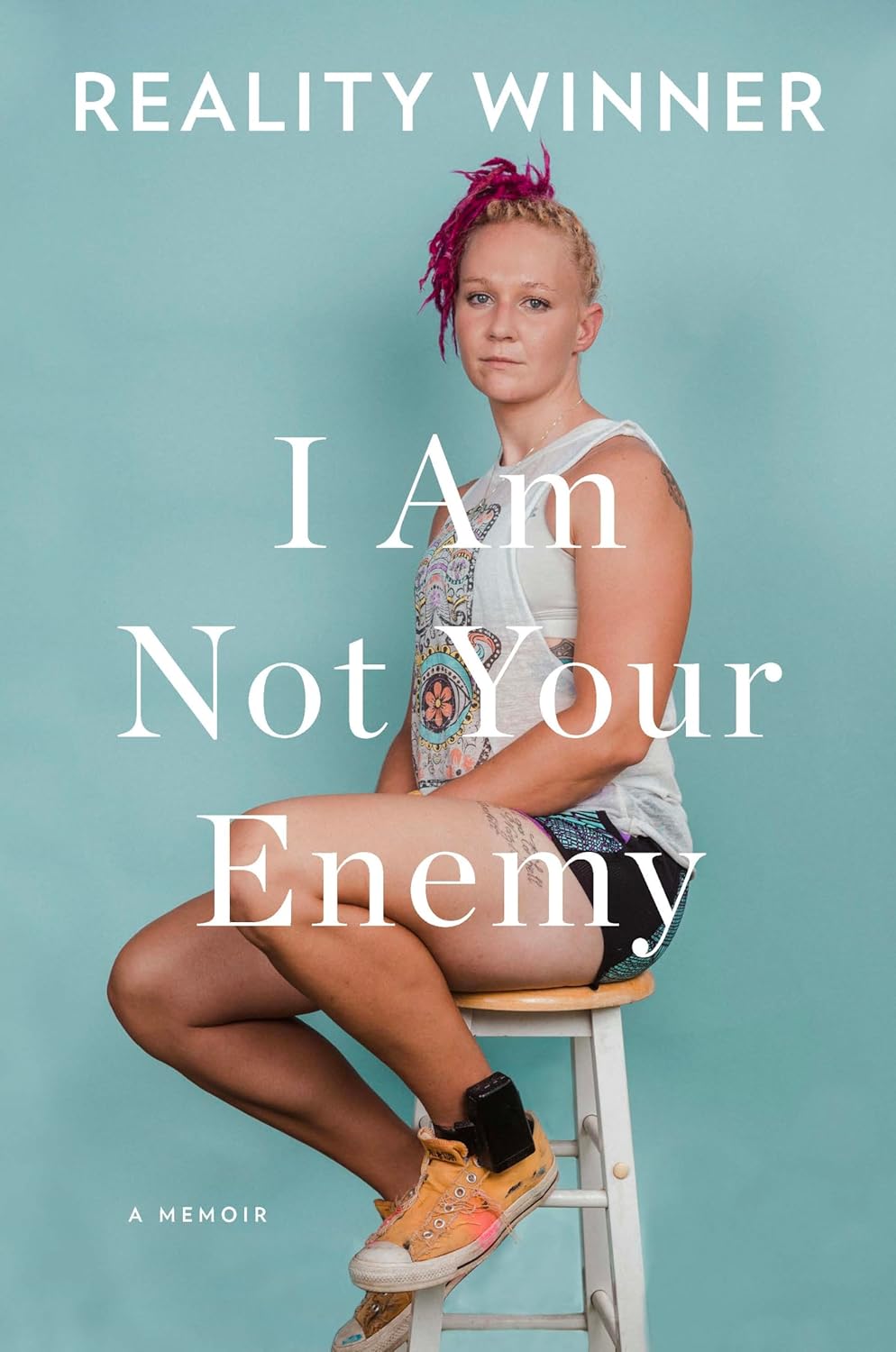Firebrands: The Untold Story of Four Women Who Made and Unmade Prohibition
- By Gioia Diliberto
- University of Chicago Press
- 336 pp.
- Reviewed by Rose Rankin
- October 24, 2024
Think we’re polarized now? You should’ve seen the temperance era…

The word “Prohibition” tends to conjure black-and-white images of Al Capone’s tommy-gun-toting gangsters being chased by intrepid (or, depending on your opinion, foolhardy) Feds like Eliot Ness. The commonality of these pictures of Roaring Twenties bootleggers and speakeasies is that all the characters in them are men, and it’s this misperception that Gioia Diliberto aims to rectify with Firebrands: The Untold Story of Four Women Who Made and Unmade Prohibition.
Prohibition as a law — as well as the larger social movement behind it, temperance — was spearheaded by women. Both temperance and suffrage, in fact, coalesced as political issues in the post-Civil War era. Diliberto begins her book by explaining how temperance, in part, fueled the suffrage movement because women in the 19th century demanded legal means to end drinking but couldn’t affect change without the ability to vote.
In 1920, when the narrative begins, Ella Boole, president of the Woman’s Christian Temperance Union, had just achieved her dream of getting alcohol outlawed nationwide, but as this stereotypical scold of a woman understood, passing a law and enforcing it are two very different things. So, the male leadership in the Executive Branch of the U.S. Government gave the most unenviable job in the country to a female: lawyer Mabel Walker Willebrandt, who became assistant attorney general in 1921.
She was charged with enforcing the Volstead Act, the legal mechanism behind the 18th Amendment. Willebrandt is a fascinating individual largely lost to history, and Diliberto spends many pages exploring her zealous work effort and unconventional (for the time) personal life. Among other things, Willebrandt pioneered the use of tax laws to target bootleggers, the strategy eventually used to take down Capone. She also strung along a besotted suitor for years, lived with other single women, and adopted a daughter as a divorcee, all unusual actions in the 1920s and 30s.
But the most interesting aspect of Willebrandt’s life was her descent into the grubbiness and corruption of politics while trying to reach her goal of a federal judgeship. She ordered speakeasy raids timed to benefit Herbert Hoover, who was running for president and who she believed would nominate her as a judge or attorney general. She campaigned vociferously for Hoover and carried out politically motivated prosecutions. In the end, however, she was thrown under the bus by her male colleagues over the unpopularity of Prohibition. She returned to private law practice but never received the judgeship she craved.
Firebrands gets bogged down in the political machinations of the 1928 presidential campaign (and Willebrandt’s actions during that period), but the election proved to be a turning point for anti-temperance forces. Fed up with the Republican Party’s embrace of Prohibition, socialite Pauline Sabin undertook a massive mobilization effort to overturn the amendment as soon as the election was past.
The exact opposite of dour Ella Boole, Sabin leveraged her good looks, immense wealth, and social connections to found the Women’s Organization for National Prohibition Reform (WONPR), which became a juggernaut in the mold of what we now call super PACs. WONPR supported or opposed candidates, organized in communities across the country, held speeches and marches, and became the leading force behind the Prohibition-repeal movement.
At the same time, on the eve of the Great Depression, Willebrandt prosecuted “the Queen of the Nightclubs,” Texas Guinan, yet failed to secure a conviction from a jury dazzled by Guinan’s celebrity status and bad-girl persona. Although she was the least politically important of the four women profiled, Guinan adds vibrancy to the narrative as a hustler, mob associate, and actress who lived in the demimonde of the Jazz Age.
By the early 1930s, Boole and Sabin represented opposite ends of the Prohibition spectrum; the reader knows how the battle ends. WONPR, the crushed economy, rampant violence driving public disgust, and the election of Franklin D. Roosevelt all combined to end the 18th Amendment via the ratification of the 21st. Boole and Sabin — along with Willebrandt and Guinan — faded from the public eye and the historical record, but the nation was forever changed by their deeds.
Diliberto is an excellent researcher, and her detailed reconstruction of these women’s lives brings an otherwise obtuse political story to life. She also does well examining the perspective of Black Americans throughout the narrative, acknowledging how racism impacted both the suffrage and temperance movements.
Denied the right to vote and wary of overturning constitutional amendments lest the 14th, 15th, and 16th also be subject to repeal, Black Americans had nuanced and differing views of Prohibition. Diliberto leans heavily on Black-owned newspapers and publications to explore how minoritized citizens experienced the law. Just as the 20th-century War on Drugs disproportionately targeted people of color, so, too, did the crusade against booze in the 19th.
In this and many other ways, the fight over banning alcohol will sound familiar to contemporary readers, and Diliberto acknowledges the similarities between now and a century ago, noting it was a time “of extreme political divide, toxic prejudice, weak leadership, and charges of fake news.” It’s a reminder that the past really is prologue and that the dynamic, capable women behind national movements are all too often written out of the history they help make.
Rose Rankin is a freelance writer from Chicago. She focuses on history, science, and gender issues, in particular, women’s literary history.

